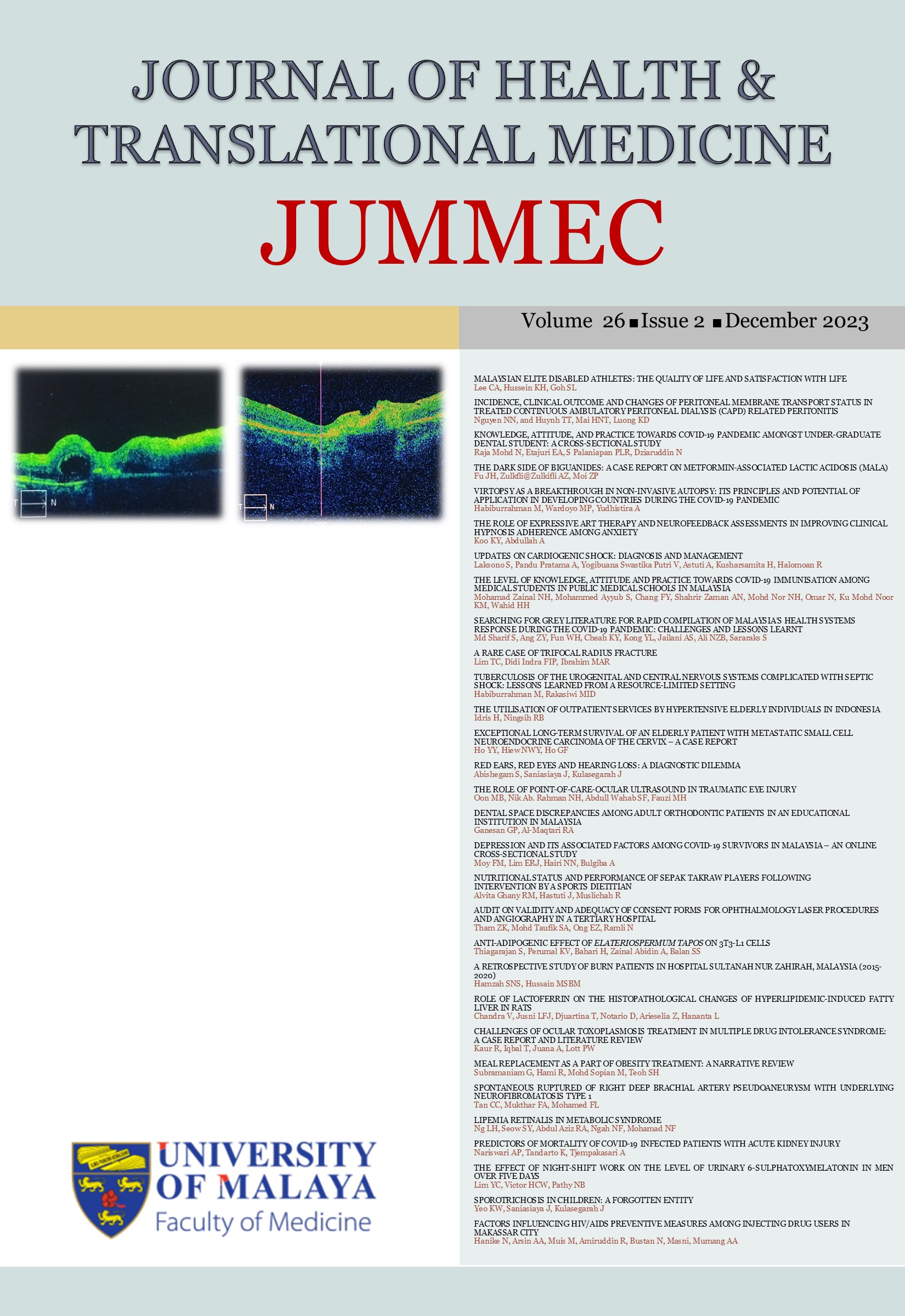CHALLENGES OF OCULAR TOXOPLASMOSIS TREATMENT IN MULTIPLE DRUG INTOLERANCE SYNDROME: A CASE REPORT AND LITERATURE REVIEW
Received 2022-03-12; Accepted 2023-01-30; Published 2023-09-13
DOI:
https://doi.org/10.22452/jummec.vol26no2.23Keywords:
Ocular toxoplasmosis, anti-folates, macrolide antibiotics, drug intolerance, intravitreal clindamycinAbstract
We report a literature review and a case of ocular toxoplasmosis in a patient with multiple drug allergies, who was
successfully treated with regular intravitreal clindamycin and subconjunctival dexamethasone. A Malay lady in her
twenties presented to us with right eye blurring of vision of 2 weeks duration, which she described as a central
scotoma. Visual acuity at presentation was hand movements. Examination revealed intense ocular inflammation. The right eye had anterior segment inflammation of 3+ cells with fine keratic precipitates, whilst the posterior segment revealed papillitis, vitritis, retinitis, choroiditis, vasculitis and hyperpigmented chorioretinal scar inferotemporal to fovea. Ocular coherence tomography showed intraretinal fluid and retinal thickening. Fluorescein angiography showed early hypofluorescence of the lesion with progressive hyperfluorescence and leakage from the optic disc. Immunoglobulin G serology of Toxoplasma gondii was raised and immunoglobulin M levels were normal. The patient developed an allergic reaction with classical antibiotic and antifolate therapy. She was successfully treated with regular two-weekly intravitreal clindamycin and subconjunctival dexamethasone and her best corrected visual acuity was 6/18 at the end of her treatment. Intravitreal injection of clindamycin and subconjunctival dexamethasone is a good option in patients of ocular toxoplasmosis who are allergic to oral medications.
Downloads
Downloads
Published
Issue
Section
License
All authors agree that the article, if editorially accepted for publication, shall be licensed under the Creative Commons Attribution License 4.0 to allow others to freely access, copy and use research provided the author is correctly attributed, unless otherwise stated. All articles are available online without charge or other barriers to access. However, anyone wishing to reproduce large quantities of an article (250+) should inform the publisher. Any opinion expressed in the articles are those of the authors and do not reflect that of the University of Malaya, 50603 Kuala Lumpur, Malaysia.


